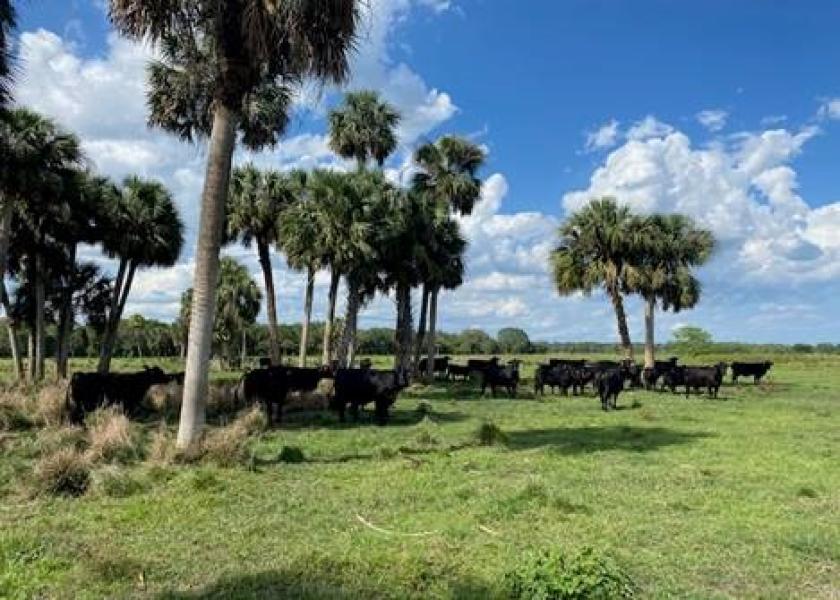The Rich Legacy of the Florida Beef Cattle Industry

The first cattle to arrive in what is now the United States were brought to Florida by Ponce de Leon in 1521. Over time, cattle ranching was established in Florida and the cowboys who used whips to bring cattle out of the swamps and thickets became known as Cracker cowboys and the cows known as Cracker cattle. Cracker cattle are still found in Florida today.
However, the beef cattle industry in Florida today is modern and big business. On January 1, 2023, Florida was the number nine beef cow state in the country with nearly 900 thousand head. Several of the top ten cattle cow-calf ranches in the country are in Florida. The long legacy of cattle ranching in Florida includes many multi-generational operations that are still going strong.
Last week, a group from Oklahoma, including members of the Oklahoma Cattlemen’s Association and from Oklahoma State University, visited Florida to learn about cattle and agricultural production in an environment unlike anywhere else in the country.
The biggest concentration of beef cattle in Florida is in the region to the west and a bit north of Lake Okeechobee. The semi-tropical climate of southern Florida is unique and cow-calf production faces many special challenges but some advantages as well, compared to the rest of the country. This area is largely frost-free but faces a pronounced dry season each year. Forage biomass is relatively abundant, but the quality is low and deteriorates quickly in dry periods.
The heat, humidity, pests and disease challenges are such that most cows include some bos indicus influence in order to survive and reproduce. Crossbreeding is important to balance adaptation to the environment and the market demands for carcass quality. Most calves are fall-born and are marketed the following summer. Much attention is devoted to calf health pre-weaning and calves are shipped right off the cow to western feedlots with relatively few problems. Summer climate in Florida does not work well to wean and precondition calves and it is important that calves arrive to their destination in the middle of the country by early September at the latest so that they can acclimatize prior to colder and more variable weather conditions in the fall.
The Oklahoma group visited several cow-calf operations to see the pastures, cows and conditions and hear from producers in the region. Ranching in Florida has many unique challenges beyond typical cattle production and marketing concerns, including numerous issues and government programs relative to water management, resource conservation, wildlife, and predators, along with continual urban development. The group also learned about related agricultural enterprises including sugarcane, citrus, and vegetable production.
This region of Florida is also a major dairy production area, and the group visited a large dairy as well. The beef and dairy industries mutually support each other by combining to provide a critical mass necessary for cattle feed infrastructure and markets. By-products from the sugarcane industry (molasses) and the citrus industry (citrus pulp) are important local feed resources for cattle production. The severe reduction in citrus production due to the disease citrus greening is having ripple effects on cattle production due to the loss of citrus pulp as a feed resource. The group also enjoyed an airboat ride and a chance to see some alligators up close.
A big thanks to Buck Island Ranch, Butler Oaks Farm, Lykes Brothers Ranch, the Florida Seminole tribe, Larson Dairy and Williamson Ranch for hosting the group on their operations. The trip was capped by an evening of conversation and an excellent steak dinner with several local ranchers and members of the Florida Cattlemen’s Association. A special thanks to Lauren Butler, Okeechobee County Extension Director and other extension folks in the region for the terrific arrangements and logistical support. There is no better way to get a new perspective on your own operation than to see how the cattle industry works in a very different environment.







